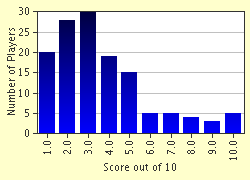Quiz Answer Key and Fun Facts
1. Around 500 B.C., one of these greats of ancient Greece was the first major figure to propose that the Earth is spherical, but which?
2. Which great of ancient science, math and geography was derisively nicknamed 'Beta' by his peers because his scientific theories and investigations were considered 'second rate'?
3. Oenipodes was a philosopher/mathematician of ancient Greece who is most well-known for first making which astronomical observation?
4. Democritus is typically given credit for being the originator of the atomic theory, that is, that all matter is made of tiny, indivisible particles called 'atoms'. Is he really the first known figure to have hypothesized this key component of the physical science?
5. Which ancient Eleatic philosopher 'proved' that motion does not exist based on a number of paradoxes?
6. This early medieval Latin author probably established what came to be known as the 'trivium' and the 'quadrivium', the educational curriculums used throughout the Middle Ages. Name him.
7. 6th century philosopher Johannes Philoponus developed which theory of motion that was later to appear in the work of Galileo and Newton?
8. During the early period of Islamic rule in the Middle East under the Umayyad Dynasty (the first Arab dynasty), what city, dominated by Nestorian Christian and Jewish scholars, became the center of science and medicine?
9. What is the Latin name of the Nestorian Christian who served as court physician for the greatest caliph of the most important Arab dynasty, the Abbasids, Harun al-Rashid?
10. Which important instrument of science was reintroduced to western Europe, during the late Middle Ages, by Pope Sylvester II?
Source: Author
thejazzkickazz
This quiz was reviewed by our editing team before going online.
Any errors found in FunTrivia content are routinely corrected through our feedback system.

